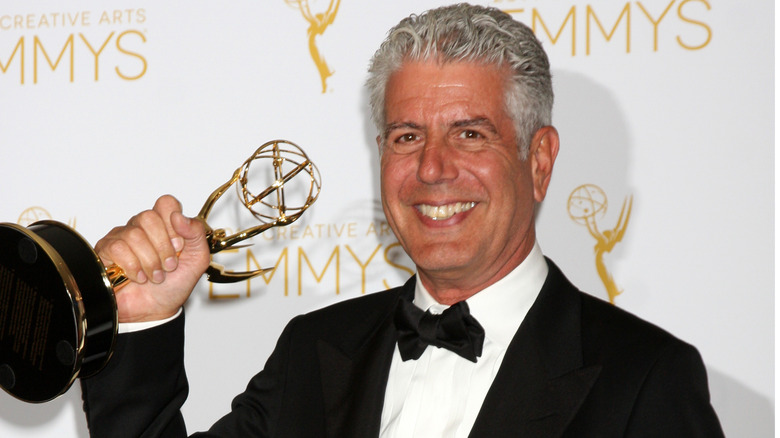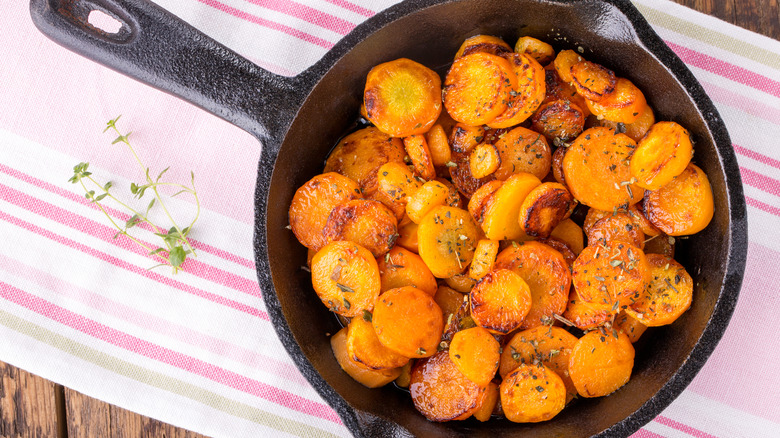Anthony Bourdain's Secret For Restaurant-Quality Vegetables
Before becoming the iconic globetrotting media personality and witty author we remember him as today, Anthony Bourdain spent more than two decades sharpening his knives — and his culinary skills — in the trenches of professional kitchens. So it's safe to say that he picked up more than his fair share of cooking tricks for achieving restaurant-quality meals at home, from his fiery tip for getting a French onion soup extra crispy to his ingenious (albeit tedious) butter technique for baking better biscuits. Bourdain also, thankfully, wasn't shy about sharing them, whether in his multiple cookbooks or on his various food programs.
One of the best bits of knowledge Bourdain bestowed upon cooking civilians has to be the secret behind those tender, decadent restaurant vegetables that we could never quite nail in our own kitchens. Until now, that is. According to the chef-slash-television-host, the linchpin(s) of any good vegetable side dish are — drum roll, please — sugar and butter. Lots and lots of it.
In the famous 1999 New Yorker piece that kick-started his media career, Bourdain wrote, "In the world of chefs...butter is in everything." He went on to posit that in a fine dining restaurant, "you could be putting away almost a stick of butter with every meal." We don't doubt it. As they say, fat equals flavor, and Bourdain certainly knew how to make vegetables as flavorful as possible.
Butter and sugar take vegetables to the next level
Anthony Bourdain revealed his veg-cooking secret in a 2007 episode of "No Reservations." Whipping up a plate of Vichy carrots, a French dish consisting of gorgeously glazed carrots, he explained in slightly less-than-scientific terms that the dish calls for a "crapload" of butter and a decidedly "not shy" pour of sugar. A recipe for the dish on the Travel Channel's website spells it out more literally: 2 cups (or 4 sticks) of butter, plus 3 cups of sugar (per 5 pounds of carrots). "If you ever wondered why restaurant vegetables taste so good, now you know," he divulged.
OK, so butter is a given when it comes to making anything tastier, but as for all that sugar? It also helps to enhance the flavor and mouthfeel of vegetables in more ways than one. First, the butter and sugar combine to achieve some wonderful caramelization, turning even the most bitter vegetables, like broccoli or Brussels sprouts, into a sweet-and-savory treat. It's one of the main reasons why we here at Tasting Table have previously suggested adding sugar to roasted foods.
But sugar can also help maintain vegetables' shape and integrity on a cellular level when they meet heat, preventing them from cooking into that dreaded mush. Clearly, fancy restaurants have been doing something right — and we can thank Bourdain for letting us in on it.

